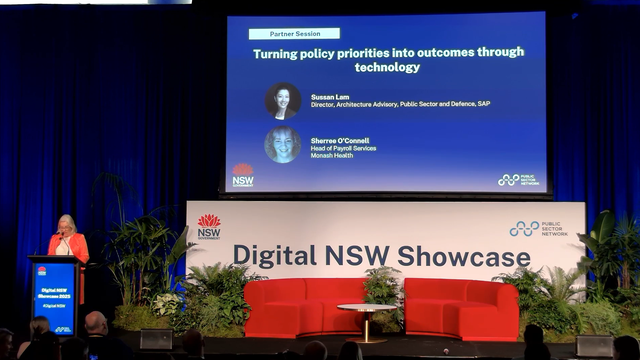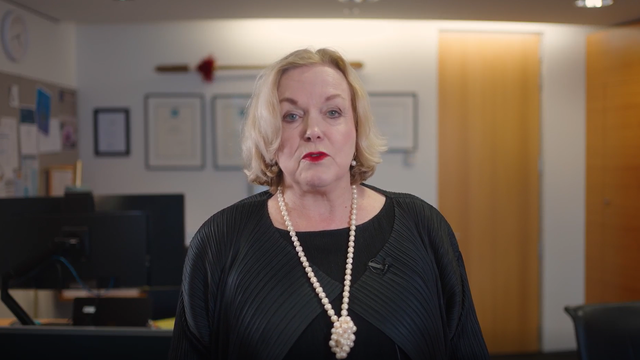Ensuring Affordable, Reliable, and Sustainable Local Government Services and Infrastructure
Asset Management – it’s a marathon, not a sprint

Dr. Nicole Davis
General Manager, Infrastructure and Operations
Redland City Council (QLD)
Strategic Asset Management Planning
Local councils across the country hold a large repository of assets. Depending on the location and size of the council, these might vary from vehicles and buildings, to agricultural and maritime equipment roads and highways, health and waste products, playgrounds, museums, and any number of other assets.
Dr Nicole Davis , the General Manager of Infrastructure and Operations at Redland City Council between Brisbane and the Gold Coast in southeast Queensland, says that councils hold assets to be able to “deliver services to the community,” and that ultimately asset management plans are about “affordability, meeting the community expectations and financial sustainability.”
Redland City Council has a population of just under 160,000, has over 12,000 registered businesses, 335 km of coastline, and holds $2.8 billion of assets under management. Most of their assets are to do with some form of “service delivery, shelter, movement or social interaction – really, they are all about liveability.”
By comparison to other councils, in many ways Redland City Council “does asset management quite well,” with “exceptionally sound policies and plans.” However, “some parts of the business are more mature than others,” and the goal was to “operationalise the asset management plans” to ensure that they remained fit-for-purpose and easy to navigate.
This was not the first time that an attempt to modernise the system was tried, but there have always been “challenges and tussles between finance, the asset managers and the operations people.” The problem was that it was previously attempted as an accounting exercise. To be successful, it needed to be undertaken as an “asset management and work order approach.” Part of the driving force behind the most recent attempt was the desire to remove “paper-based entries and spreadsheets.”
To overcome all the issues of the previous attempts, a program called ‘Assetic’ was introduced. It is of course an excellent asset management program, but it also has “a very good tablet approach to the work order system.” Moreover, “the effort involved in trying to keep a spreadsheet up-to-date is mindboggling, whereas by using Assetic and actually mining the data as it comes through live, is actually a lot more efficient.”
Changing mind-sets
Having an efficient and effective program though was not enough. With many council employees used to doing things a certain way, once the program was set up, “it was all about changing mind-sets.”
To achieve this, they initially set up a “steering committee led by the CEO,” and then began targeting specific user groups, each of whom needed to have “the ‘why’ explained to them.” For instance, first came the planners. They were adamant that they were already using a system that worked and didn’t need a new program. “What we found though is that when you actually showed them what the new system could do, like mine correct data in real-time, the planners actually understood the importance of the system.”
The next group were the field workers who were the ones that used the most amount of paper. Again, when they were shown the efficiencies of the system and that using it could instantly help the planners to “get better planning for things like parks and footpaths, and other things that are really important to them, they also realised that it would actually make their jobs easier.”
Apart from specific user groups, forums, case studies and demonstration events were held throughout the council showing “the pros and the cons,” and explaining why the new system might be better, even if it is not perfect, because no system can be. For many, this “give them an ‘aha’ moment and helped them understand the capability of Assetic.” There was a fear that for some user groups, like the “outdoor crews who have an aging population,” that this was a system that might be too complicated for them to learn because technology doesn’t form a big part of their work practices. In truth though, since “most people have smartphones, they took to it like a duck to water and it wasn’t nearly as scary as first anticipated by the business.”
One of the reasons why the outdoor crew engaged with the new system so easily was because there was a dedicated helpdesk set up at council and they felt they could ask whatever questions they had about it. There were also champions in each team and “feedback that came from the crews straight away, virtually” was incorporated. In some cases, changes were made to simplify processes.
There were two other types of employees who couldn’t change their mind-sets. There were some people who just couldn’t get their heads around a new way of doing things because they had always done things a certain way. And there was another group that live off adrenaline and are very reactive. Changing their processes to a more planned way of working was unexciting, but also impractical for them. “So we actually set up a planned workforce – who know what they are doing every single day in the way they’ve always done it, and a reactive workforce – who need the adrenaline to drive their work.” Some people also thought initially that the new system would create extra work for them, but realised very quickly that it was actually a lot more efficient once they got used to it.
”
“The system is just an enabler. We needed our workforce to change their approach, their beliefs and their philosophy around asset management.”
A new reality
The new system became “operational in July 2020.” However, since there was so much data already in the council, rather than import all the data and “get everything exactly right from day dot, which would take years, we decided to get the data up-to-date and accurate as we went along.” This meant that the more people that used it from the outset, the better the system would perform and “we could fix things up as we went. We’re working on the principle of the 80/20 rule,” where only 80% of data might be accurate initially, but that is good enough. This principle also allows people, “especially construction crews who were the last ones to embrace it,” to make mistakes.
Since the system is integrated for tablets, some field staff who have never worked with technology are now using tablets “which is actually really amazing. It’s not just about asset management, but it also allows staff in the field to have access to more data, to use the internet and to do their timesheets online. It’s actually a win-win situation for all.” The asset management system also integrates with the existing HR system and customer requests, so there is now a unified process for many things that used to be separate and complicated.
“In the future, we are working on the inclusion of the safety cost tracking materials which will actually give us the ability to undertake true bottom-up budgeting and cost analysis, including scenario testing that we can then present to our community and our Councillors. We will then be able to say to them that if they want a particular service with a particular frequency, this is what it’s going to cost. We will actually have the true costs right there. It could take some time to get there, but that is the goal that we’re working towards.”




































